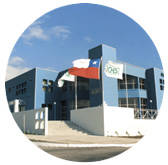Medical Attention
|
|
The CETHA has turned its efforts mainly to the execution of an On Field Investigation Program In Altitude. With the purpose of giving the member companies and their workers appropriate information regarding the risks that they are facing, the way to prevent them and the training and education mechanisms for their personnel. |
|
|
However, we have also dedicated important efforts in establishing policies of health in altitude. This is why, and in cooperation with the Preventive Exams Center (CEP) and Work Medicine (MDT), units of the ACHS, it was set in the Antofagasta Consensus 1997 about Medicine in Altitude š Conference Effect of Altitude in the Work‰s Performance- The minimum necessary tests to determine a compatible health state with the position and the risk at which the worker will be exposed in Altitude. |
|
|
Because of what is previously mentioned, and also for the acquired experience on this line we have implemented, in Antofagasta- II region Chile, a general hospital for the derivation of patients with the symptoms of Acute and Chronic Mountain Illness, and common associated illnesses in workers that work in altitude. |
The most frequent symptoms of consultation of Acute and Chronic Mountain Illness and of Common Illnesses is:
|
Acute Mountain Illness |
47 % |
|
|
Common Illness |
38 % |
|
|
Polycorpuscle |
15 % |
|
Within the Common Illnesses, there has been detected a high frequency of Cardiovascular Risk Factors such as:
|
Obesity |
93% |
|
|
Tobacco-Addiction |
55% |
|
|
Dislipidemy |
35% |
|
|
Blood Hypertension |
22% |
|
|
|
Our acting in this line has been planning and controlling the worker‰s treatment working in altitude, so as to normalize his parameters and so that he achieves the minimum regulations of pre-occupational and occupational tests of altitude and so that he can be integrated or reintegrated to its job‰s position without risks. |
